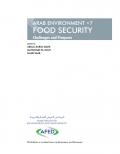
As the world’s most populous region and the most vulnerable to climate risks, Asia is at the centre of a paradigm shift towards low carbon green growth. This shift must incorporate economic and social inclusion, and environmental sustainability in the strategic policy making and implementation. Many developing Asian economies have started this paradigm shift, bringing clean energy access to poor, stressing industrial competitiveness, developing green technology markets, and supporting decent job generation. What has been the initial experience with the paradigm shift? What can policy-makers learn from the experience and further advance the policy agenda? How can an action focussed approach be structured to support the continuing policy learning and advancement?

Japan, South Korea, and Taiwan are deficient of domestic fossil energy sources and depend significantly on imported fuels. Since the oil shock in the 1970s, all three countries have promoted renewable energy as an alternative energy source to improve energy security. Currently, renewable energy is being promoted to build low-carbon economies. This study reviews the development of renewable energy policies and roadmaps. It also examines and compares strengths, weaknesses, opportunities, and threats (SWOT) of these countries in the context of advancing renewable energy policies and technologies and expanding domestic renewable energy installations, as well as strategically positioning themselves in the international renewable energy market as exporters of clean energy technologies. Through the SWOT analysis, this paper identifies a capacity for additional renewable energy deployment in these countries and highlights the necessity of increased cooperation between the three countries to strengthen their domestic and regional renewable energy sectors and compete in the global renewable energy market in the post-Fukushima era.
This article describes a multidisciplinary study of market-based policies for controlling air pollution in China. While previous studies have examined the costs and benefits of pollution control separately, this approach determines them together using an economy–environment model for China. We employ air dispersion simulations and population maps to calculate health damages due to air pollution. This provides estimates of incremental damages for industry output and fuel use. Based on these marginal damages, we simulate the effect of “green taxes” on the economy and show that the environmental benefits exceed the aggregate costs, ignoring adjustment costs for individual sectors.
